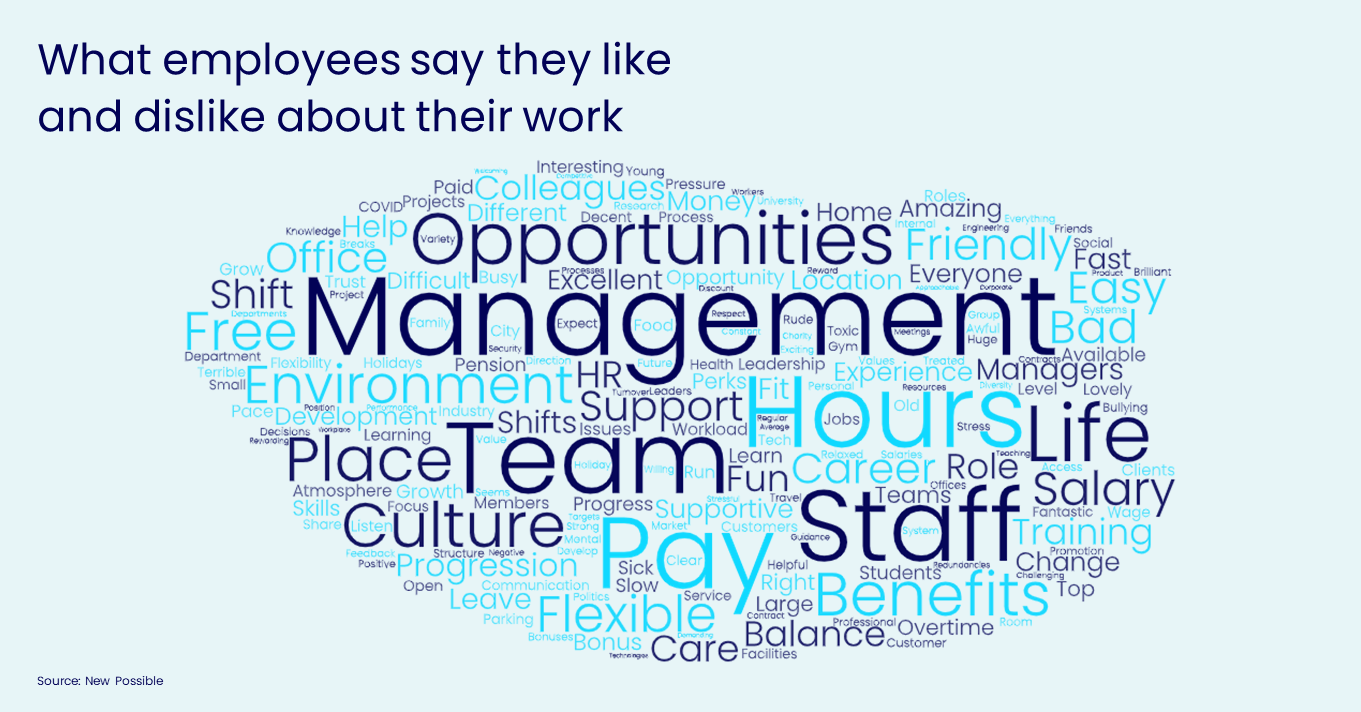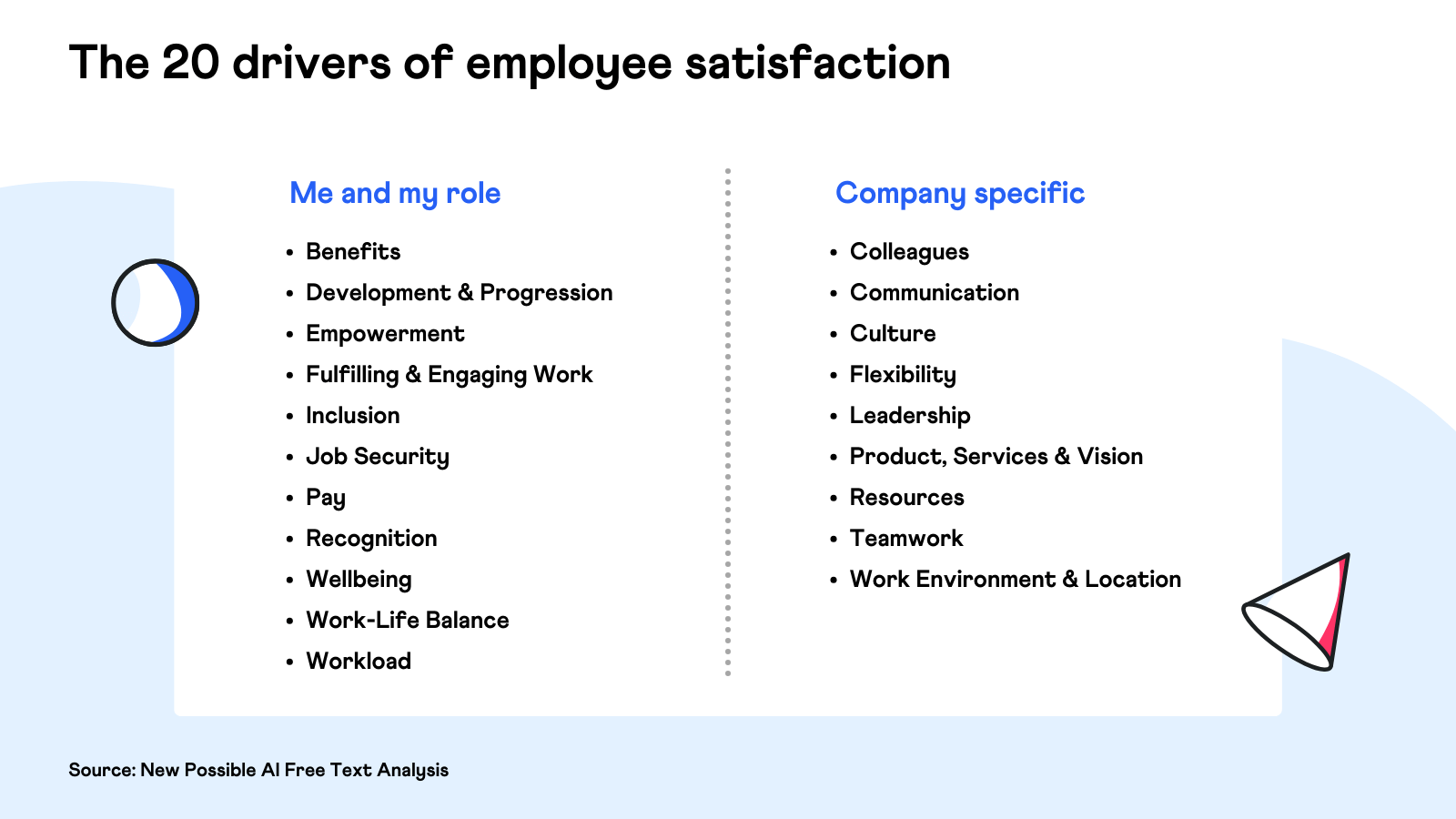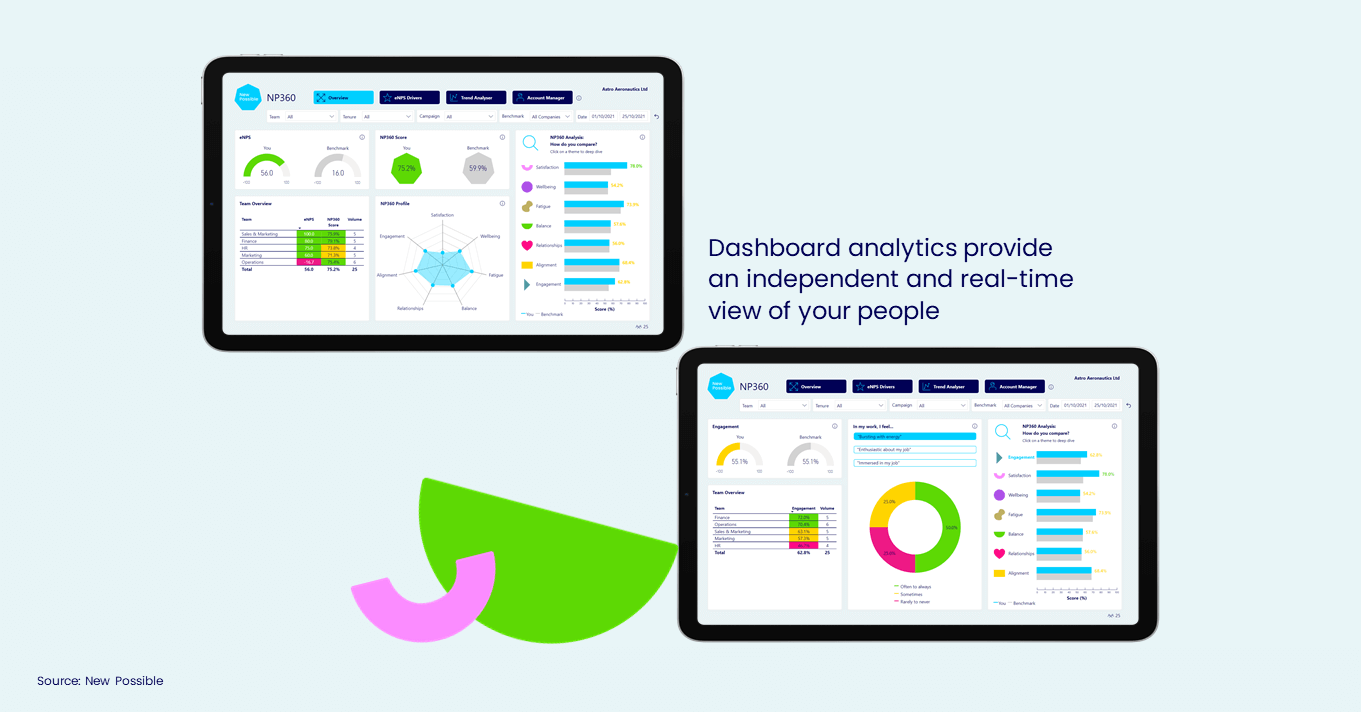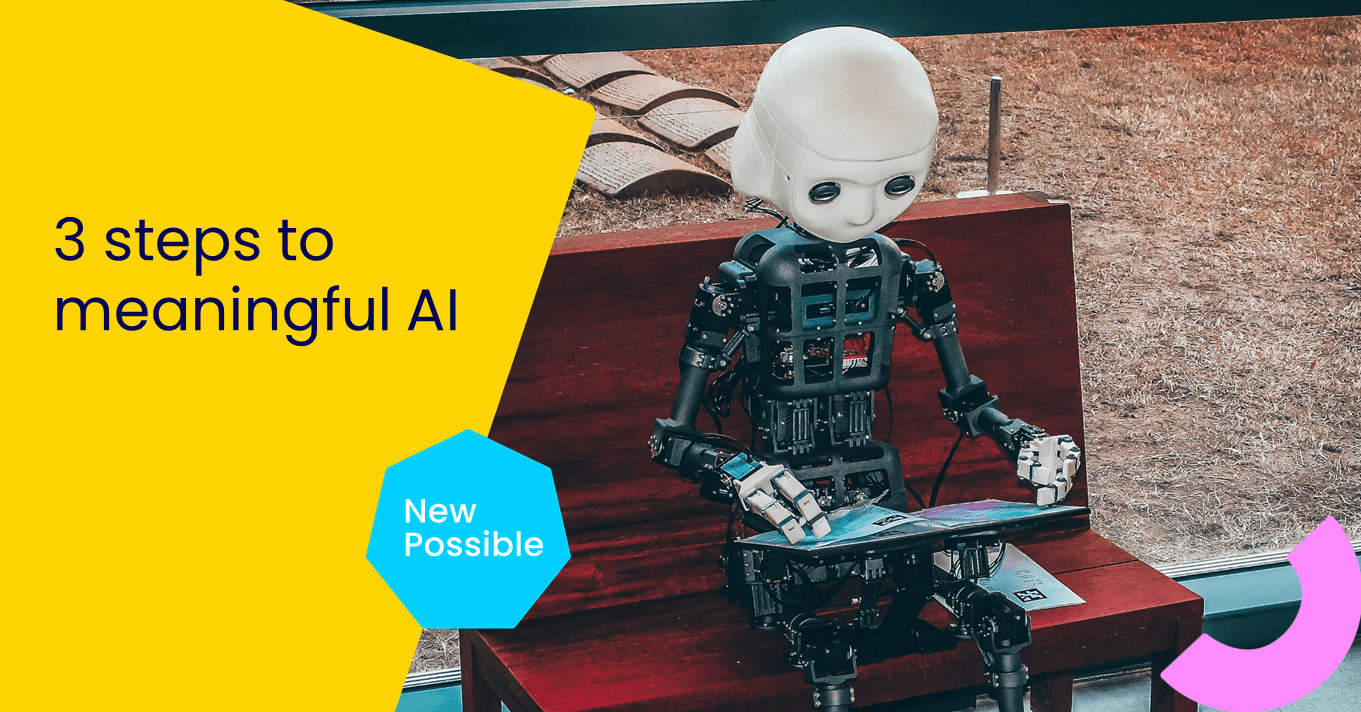Our NP360 assessment captures what your people like and dislike about their experience at work in their own words. But how do you make sense of all this feedback to create something that’s actionable? This is the kind of insight that will help you improve retention, increase productivity, and ultimately build a better business.
That’s why we developed an AI-powered insight dashboard that helps you to quickly see which aspects of the people experience are having the greatest impact on employee’ satisfaction and loyalty. In this article, we explore how our AI works and define the 3 steps behind its development.
How our AI delivers meaningful insight
Before our AI can get to work, our NP360 assessment asks employees the following three questions:
- On a scale of zero to ten, how likely are you to recommend Brand X as a place to work? (eNPS)
- What do you like about working at Brand X?
- What could be improved about working at Brand X?
As you can imagine, the above invites almost infinite possibilities. From parking to pay, leadership to wellbeing, people have a lot on their minds! But what matters most to your people?
This is where our AI works its magic. Digesting the responses to questions two and three helps to identify the underlying drivers, which are then linked to the employee Net Promoter Score (eNPS) awarded in question one.
As a reminder, eNPS is a strong indicator of your employees’ satisfaction and loyalty. Understanding the key drivers behind this score can therefore be incredibly powerful when trying to unlock the potential of your people.
Using our intuitive dashboard, you can quickly see how the drivers trend over time. You can also compare teams and benchmark by industry and geography.
The next sections will deep-dive into how our AI was developed.
Step one: Collecting employee feedback that reflects the real-world
AI is completely shaped by the information it’s exposed to, with biased or poor-quality training data leading to an equally biased or poor-quality outcome - ‘garbage in, garbage out’ as the saying goes.
We therefore knew that the employee experiences we captured had to be reflective of the real-world. We did this by:
- Representing every sector and type of firm, weighted by the latest ONS figures.
- Including all levels of an organization, from C-Suite to the shop floor.
- Ensuring that feedback was demographically diverse.
In total, we listened to thousands of employees from the FTSE 100 to fashion start-ups and local government - developing the breadth of feedback needed to create a universal model that can work for any type of organisation, of any size and in any sector.

Step two: Defining the drivers of employee satisfaction
Developing AI is a very human process! We personally read through every piece of employee feedback and boiled down these experiences into what we defined as the 20 drivers of satisfaction. We then grouped these under the headings of ‘me and my role’ and ‘company specific’:

We found that no driver is an island. For example, when employees talk about empowerment, they often also mention management. Similarly, firms that were described as competitive, often did poorly for work-life balance. And whilst there are many relationships between drivers, it was also clear that each firm had a unique profile.
Step three: Training the model
Whilst we refrain from using too many cooking metaphors, step one and two provided the ingredients we needed to shape our AI: employee feedback and a framework. Now, we just needed to combine them both to create our training data.
This meant going through each piece of feedback and tagging it with the drivers we identified in step two. Some pieces of feedback mentioned just one driver, whilst others referenced up to eight. It’s a painstaking process, but the more care put into this step, the more accurate the AI will be.
Once the training data was ready, we then fed this into our machine learning model to instruct it on how feedback should be classified. The results were then tested and like a demanding teacher, we repeated this process multiple times until we achieved a model with greater than 90% accuracy.
Key Takeaways
Training AI that’s comprehensive enough to understand the nuances and diversity of human speech is no easy task. It requires a volume of training data that’s reflective of the real-world and ideally, a ‘human-in-the-loop’ approach that combines the best of human and machine intelligence.
The results however mean that we’re able to give you access to real-time and meaningful insights that cut through the noise and help power your organisation forward.

New Possible is the next generation employee insight platform that helps to unlock the competitive advantage of your people. Book a demo to learn more or read about our mission.

